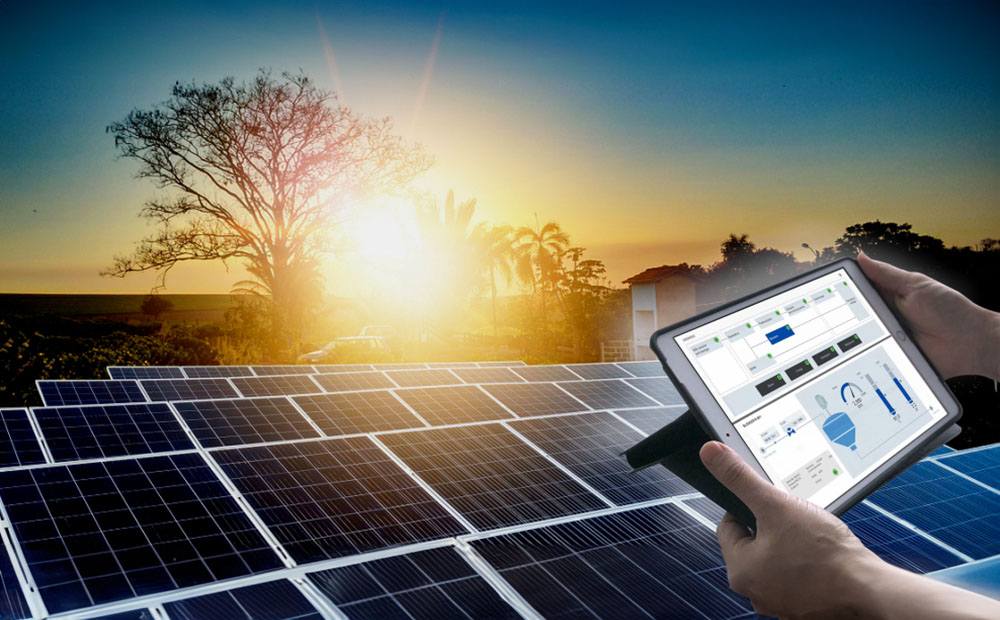
As the demand for solar power continues to rise, ensuring the optimal performance and longevity of solar panels is a very important factor. Advanced monitoring technologies play a crucial role in maintaining the health and efficiency of solar panels. In this article, we will examine some of the latest monitoring technologies that are revolutionising the solar energy industry.
What Are Advanced Solar Monitoring Systems
Advanced solar monitoring systems encompass a suite of technologies and methodologies designed to comprehensively track, analyse, and optimise the performance of solar energy systems. These systems leverage cutting-edge innovations to provide real-time data, enhance efficiency, and ensure the long-term health of solar panels. Here are the key components and features of advanced solar monitoring systems:
1. Sensor Technology
Multi-faceted Sensors: Advanced monitoring systems utilise a variety of sensors to measure key parameters such as temperature, voltage, current, irradiance, and humidity. These sensors are strategically placed throughout the solar energy system to capture comprehensive data on its performance.
In countries like Germany, where solar energy is popular, sensor monitoring systems can boost solar energy production by up to 15%.
2. Data Acquisition Systems
High-Frequency Data Collection: These systems collect data at high frequencies, enabling real-time monitoring of the solar array. The data acquisition process is crucial for capturing rapid fluctuations in environmental conditions and system performance.
3. Cloud-Based Monitoring
Remote Access: Cloud-based monitoring allows for remote access to real-time data. This feature is particularly valuable for system owners, operators, and maintenance personnel, providing flexibility and convenience in monitoring solar installations from anywhere with an internet connection.
According to research, cloud-based monitoring can save up to 25% in maintenance costs, making it more efficient and cost-effective.
4. In-Depth Data Analysis
Real-Time Analytics: Advanced solar monitoring systems employ sophisticated algorithms for real-time data analysis. This includes the processing of data from various sensors to generate actionable insights into the performance of individual solar panels and the entire array.
5. Thermal Camera Technologies
Hotspot Detection: Thermal imaging cameras are integrated into monitoring systems to detect hotspots on solar panels. These hotspots, indicative of potential issues, are identified early, allowing for timely intervention and prevention of efficiency losses or damage to the panels.
Report says early hotspot detection can increase a solar panel's efficiency by up to 10% in places like Spain, where it gets pretty sunny.
6. Machine Learning and Predictive Maintenance
Fault Detection: Machine learning algorithms are employed to analyse historical data and identify patterns indicative of potential faults or performance issues. This enables predictive maintenance, reducing downtime and extending the overall lifespan of the solar energy system.

According to findings, using machine learning can reduce maintenance costs by about 30%, making our solar panels last longer.
7. Communication Protocols
Advanced Communication: Reliable communication between monitoring devices and central control systems is ensured through advanced communication protocols such as Zigbee and MQTT. These protocols facilitate seamless connectivity, enabling quick and accurate transmission of data.
Reports suggest that improved communication can make the whole system 20% more responsive in places like the Netherlands.
8. User-Friendly Interfaces
Interactive Dashboards: Solar monitoring systems often feature user-friendly interfaces with interactive dashboards. These dashboards provide a visual representation of the system's performance, making it easier for users to interpret data and make informed decisions.
ALSO READ: How Installers Can Minimise Solar Inverter Noise & Electromagnetic Interference - V-TAC
9. Mobile Applications
On-the-Go Monitoring: Many advanced monitoring systems offer mobile applications, allowing users to monitor their solar installations conveniently from smartphones or tablets. This enhances accessibility and facilitates quick responses to emerging issues.
10. Remote Diagnostics and Control
Remote Troubleshooting: Advanced systems may include remote diagnostic tools, enabling operators to troubleshoot issues without the need for physical intervention. This capability streamlines maintenance processes and minimises downtime.

11. Security Features
Data Security Measures: Given the sensitivity of the data collected, advanced solar monitoring systems incorporate robust security features to protect against unauthorised access and ensure the confidentiality and integrity of the data.
12. Integration with Smart Grids
Grid Interaction: Some advanced monitoring systems are designed to integrate with smart grids, enabling better coordination between solar energy production and overall grid management. This integration contributes to a more reliable and efficient energy infrastructure.
Final Thoughts
Overall, the implementation of solar monitoring technology helps in ensuring optimal performance, maximising energy production, and reducing operational costs for solar installations. As solar installers continue to embrace technological advancements, the implementation of these technologies will go a long way in helping to achieve optimum performance and longevity.
Click here to view V-TAC’s array of solar panels. With V-TAC’s easy-to-install solar panels, installers can make the most of their time by completing more solar panel installations within work hours. V-TAC also offers superior after-sales service that guarantees peace of mind.
